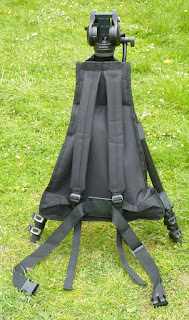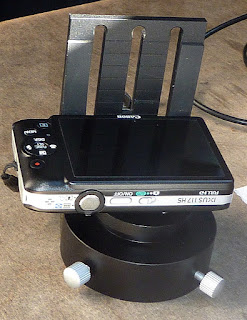~~
The higher the overall power [magnification] of your system the shallower the field of [sharp] view. This is a direct consequence of the equivalent focal length of the entire optical system. This demands you focus very carefully only on the subject which interests you.
Better a really sharp bird, or deer, against a softly focused background than vice versa! I was really shocked by this depth of field factor in my spotting 'scope despite my years of looking at terrestrial subjects though my various astronomical telescopes. A twig behind the one I focused on and the one in front of it, were both out of focus. Wind movement of a tree changed the point of sharpest focus. You see this same effect in images taken with long telephoto lenses. Photographers will deliberately use a longer lens and wider aperture to throw the background out of focus.
The field of view darkens to match the sheer power of the combined optical system. Larger aperture telescopes score better here. By providing enough light to capture an image at dusk or dawn. Or when the subject is in shadow. Smaller apertures may struggle under overcast conditions. Though the smaller telescope will be lighter and easier to carry to where you can capture your subject matter. The more light you can muster the shorter the exposure. Think about that as you read the last paragraph.
The field of view shrinks rapidly with increasing power. Handy if you want to capture a solitary subject. Less so if a distant flock or herd interests you. Worse if the subject is a bird flitting about foraging rather than static and singing. Which of a flock will you choose to focus on? At the cost of others having bits chopped off by the limited field of view. You may gain more by lowering the overall power and then carefully cropping the image later.
The higher the power the more that optical aberrations of the system are emphasized and misalignment exaggerated. Unless you have perfect optics and perfect alignment of the camera on the telescope the view may become softer. It might be tempting to use higher powers from a greater distance but you may get better results by being closer and using lower powers. Even if it means walking further.
The physical demands in supporting the telescope and camera combination rigidly during an exposure becomes ever more critical as the power rises. This can be overcome to some extent by using the camera's self timer. Short zoom, compact digital cameras may not offer remote release. Though advances in electronics or more sophisticated cameras may provide this feature.
Hopefully the usual 2 seconds delay will be enough for your chosen tripod to settle from your last touching the camera release button to set off the timer. A longer delay must be balanced against changing conditions and the bird having flown.
Another alternative is to use burst mode. That is taking a short burst of many exposures. You may capture an instant where vibrations were least annoying. Or the subject was most alluring. Wind is always a problem and will try to move the camera just when your subject is perfectly arranged in your camera's viewfinder screen. If the tree sways you may miss the tree let alone the bird.
It obviously pays to keep the magnification to the minimum you need to capture your subject at a reasonable scale. You gain all around. Greater depth of field. Larger field of view. More light to brighten your image and lower sensitivity to camera movement. Plus ++++ you shorten the exposure to freeze the image and kill any camera shake.
A very rough guide to magnification is to divide the focal length by 50. A 50mm lens on a 35mm camera is about normal 1:1 human sight. Or, you can multiply the magnification by 50 to get the equivalent focal length.
Lowest power = 27 x 50 = 1350mm! Zoom x2 and 50 x 50= 2500mm! Imagine handling a telephoto lens of that huge length in the woods or by the lake! It would require a massive support not to shake in the wind and would be totally impractical to carry around.
Now you know why you need to match your support to the magnification of your much smaller but highly magnifying digiscoping set-up. And why you should try to keep your system's magnification to a minimum.
~~















